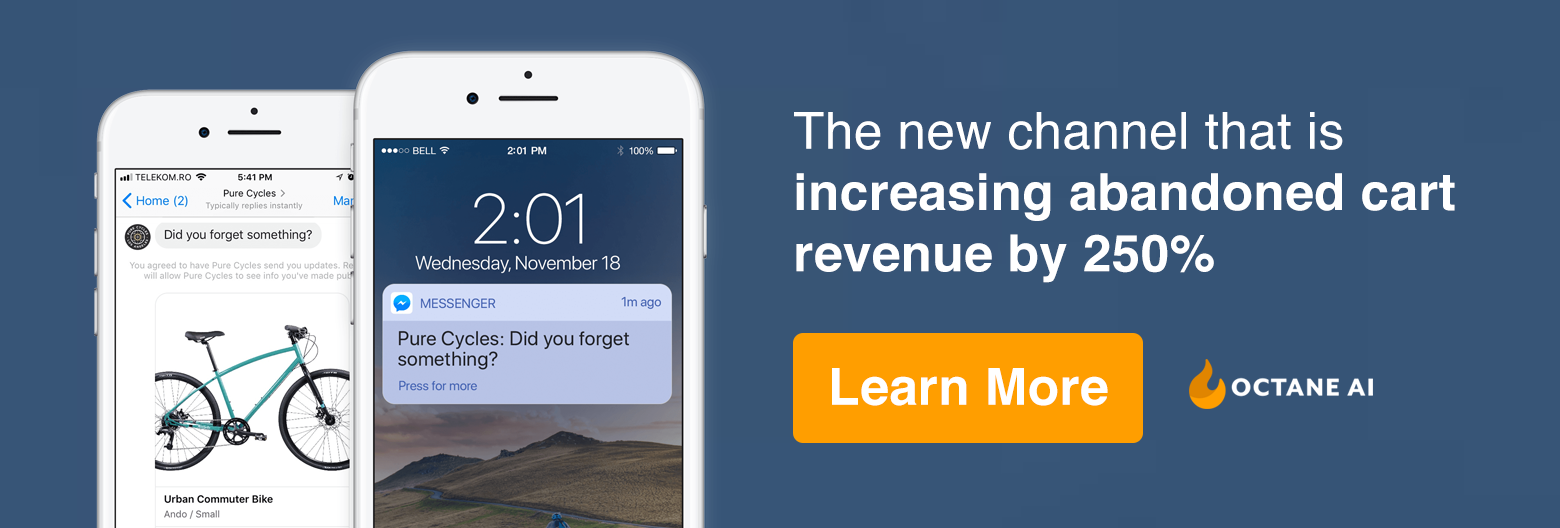It’s rare these days to meet someone as passionate about analytics as Danielle Schwolow. As a growth strategist at Multiplica, a digital optimization, UX & Analytics agency for online marketing, Danielle can talk hard data with the best in the industry.
Here at Ecommerce Magazine, we love to dive deep into the nitty gritty of the digital retail world, so we asked Danielle to share some of her insights on the industry, her own experience and expertise, and what companies do wrong when approaching their analytics.
Always Be Testing, Always Be Optimizing
“Typically, when I work with a brand, I like to look at their sources; how they’re driving traffic,” explains Danielle.
She says she thinks of their marketing strategy as a wheel, inside of which you find email, SEO, affiliate, loyalty, PR, PPC, social, etc. However, the thing that actually sets this marketing wheel in motion is optimization.
“You should always be optimizing, and you should be optimizing based on your users,” she stipulates.
In a world where personalization, customization, and segmentation are defining the future of ecommerce, Danielle has noticed that lots of companies are going backwards, spending a million dollars on digital marketing without doing any testing; driving traffic to a website but not making sure the website converts and is for the user.
At Multiplica, their approach is to do continual testing. The entry point, landing pages, checkout funnel, cart functionality, targeting, and personalization are just some of the features that need to be regularly monitored and improved upon.
For Danielle, the motivation is simple.
“Always be providing your users with a better experience. There’s always something on your site that could be improved.”
Multiplica’s initial testing rounds for companies last about 30 days to gather different variable information, including sales, users, promotions, etc. They also do user testing where they record customers doing tasks to observe their actions and where they are encountering problems.
Some testing tools they use include Monetate, Adobe Target, Google Optimize, and Optimizely. They are a tool agnostic agency, and each tool offers different pricing structures. Even if you’re on a budget, says Danielle, sometimes it’s worth it to spend some real money.
“The opportunity cost of not optimizing is so great, and companies don’t realize it because they don’t know how it’s impacting their company," she says. "Most companies will just throw more money into marketing instead of into improving their user experiences to increase engagement and conversions. They don’t know the effect that not optimizing is having on their conversion rates, bounce rates, loyalty, everything. The most expensive thing a brand can do is not optimize their website and customer experiences.”
So....What is a Funnel Exactly?
Digital marketers refer to funnels all the time, but what exactly is it and how does one get a customer ‘through’ it?
“When you think about a funnel, you have to think about that user,” explains Danielle.
When that user comes to the site, she says, that’s the top of the funnel. They’re coming from social media, then they’re landing on the landing page, after which they’re browsing throughout your site.
It’s when they finally make a purchase that you’ve gotten them through the entire process, or ‘through’ the funnel.
“You’re trying to get users to complete something,” she says. “And it's not necessarily always ‘add to cart’. That's your goal, but you’re also trying to prove that experience for the different users that are going to engage with that experience.”
Companies need to optimize their funnel for different users, which becomes a problem when they don’t understand their users in the first place.
During their discovery sessions at Multiplica when they ask about new and returning users, different devices, and sources, it often becomes clear that there has not been a unified effort to consolidate data and cater to the different kinds of users due to a dispersed and segmented setup.
“A lot of the times, someone in Paris designed the website, someone in Paris put together the ecommerce piece, someone in Texas is managing the marketing, it’s not a unified effort. They’re setting their money on fire.”
Although it can be challenging in larger companies with strict hierarchies, streamlining your communication across teams and doing the work to figure out who your user is is integral to any company’s success, whether big or small.
“If you don’t know the problems your user has or if you can’t improve your user experience to provide the path of least resistance, then you’re gonna have larger problems,” Danielle warns.
With so much to learn, change, track, and monitor, it’s no wonder companies sometimes feel overwhelmed. In order to ease clients into the process, Danielle explains that Multiplica begins by starting slow.
“It’s like an onion and we peel the first layer and we see what’s going on. We see where you could improve. We call it ‘golden nuggets’ when we find out where your users are really having an issue.”
This may relate to where companies are losing conversions, cart, retentions, or something of the like. They then form a hypothesis based on their observations and lay out over a timeline what they will do for the company, usually about six to eight weeks.
“First we analyze, then we ID, then we run the test. Based on that test, we might run another test. Then, we might continue to optimize that same page based on the user type such as new vs returning or users from a certain source. By then, we’ve learned a lot, and by our discovery session, we let you know where your problems are.”
A lot of times, says Danielle, the clients are astonished when they see the mistakes they’ve been making that have led to a loss of sales and consumer engagement.
In their work for a major home furnishings brand, Multiplica succeeded in helping customers easily identify the size of the product by photographing it in a domestic surrounding.
For a well-known clothing brand, they realized that photographing the garments on models instead of simply displaying them on the website led to higher sales, particularly among men which was not what the brand hypothesized.
Upcoming Trends and Advice From an Expert
When speaking of the future of analytics and testing, Danielle is excited about many things on the horizon and the problems they seek to solve, including the implementation of chatbots for ecommerce sites.
Software like this will help companies identify if the same user is browsing on their mobile phone and later on their desktop, which is currently difficult to verify.
This means that if customers want to explore sites on their mobile phone and pay for items on their desktop, they might not be recognized and need to start the process all over again.
The experience, she says, has to be seamless for the customer. Chatbots offer another data collection tool that can really help given information to streamline users’ experience across devices.
On her side, Danielle is still in search of the perfect tool that will help her maximize her impact as a strategist. Although it doesn’t exist yet, she knows exactly what it would offer.
“I would love to be able to download some software, plug it into the tool, and immediately be able to highlight your issues. I want to be able to take apart the data like a puzzle and put it back together in whatever way makes sense for the user. Every business is different, every user is different, every experience is different. How can you then utilize that data to make the experience better?”
For businesses looking to take charge of their own analytics, the best thing to do according to Danielle is hire someone who knows Google Analytics like the back of their hand and can set it up correctly. The famous analytics tool is so complicated that it requires certification to be considered proficient, highlighting the importance of hiring an expert.
Brands who are doing a particularly good job with their digital marketing strategy, she says, are Victoria’s Secret Pink, Sephora, and Target , just to name a few. But her favorite client so far is Pier One.
“They have such big data. It was so challenging and rewarding to be able to find their golden nuggets!"
Learn from Ecommerce Experts
Are you growing your ecommerce business? Subscribe to Ecommerce Magazine for up-to-date insight from industry professionals.
Top splash photo by William Iven on Unsplash



